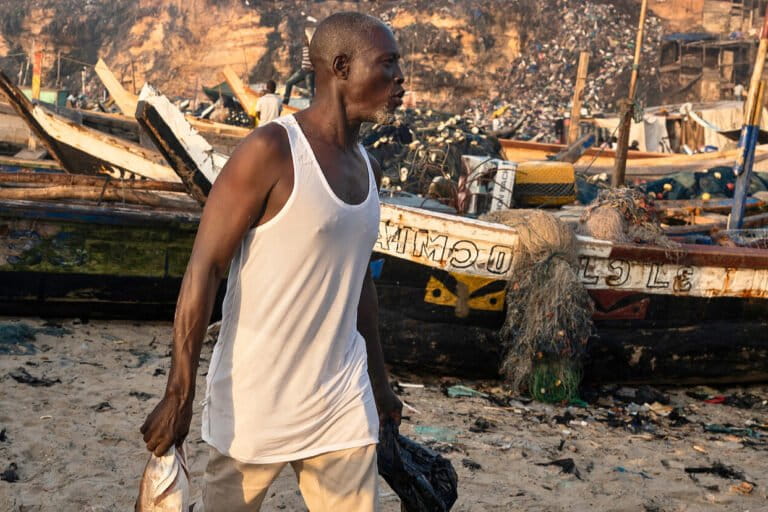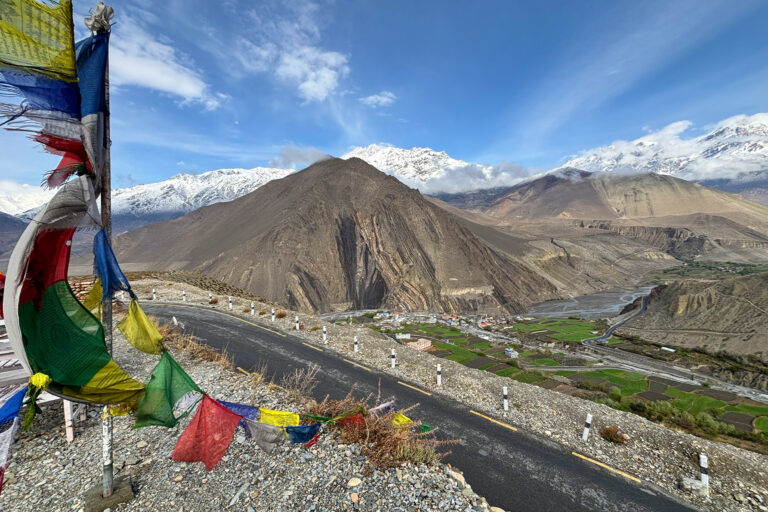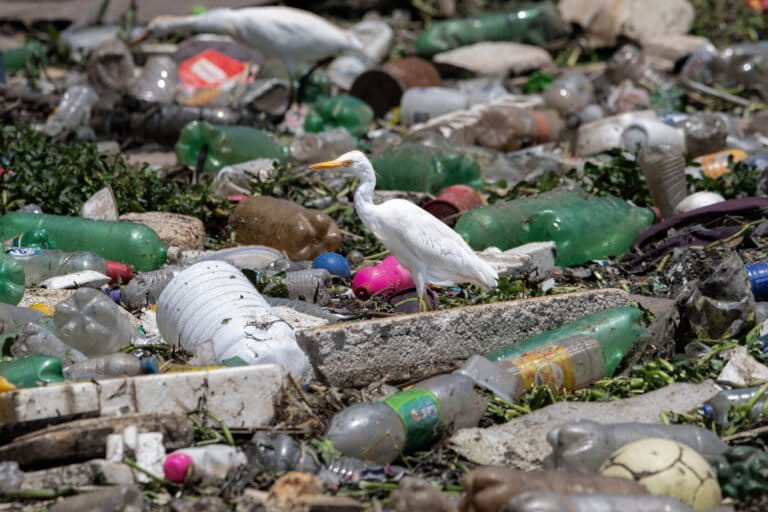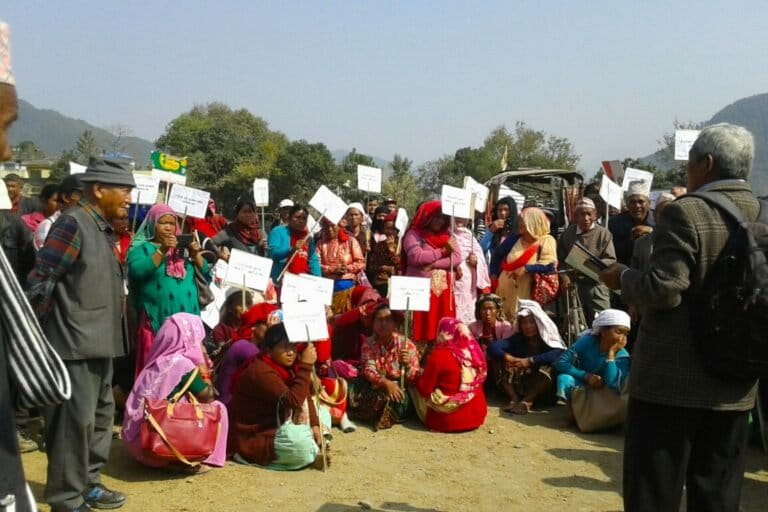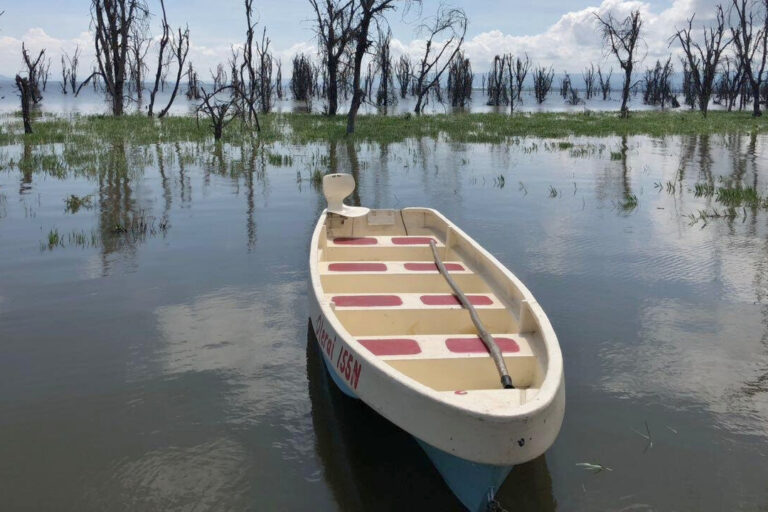- At COP27 this week Brazil president-elect Luiz Inácio Lula da Silva pledged “zero deforestation and degradation of biomes,” a goal to be achieved by 2030.
- Lula also plans to establish a Ministry of Indigenous People, and to end “all the exploration of Indigenous lands by miners, and… to prohibit timber cutters.” Activists said Lula has sent a “strong message” at the COP27 summit, a meeting which has so far seen little climate progress.
- The president-elect has also met with Norway and Germany about restarting the Amazon Fund, which helped finance efforts to keep the rainforest intact until it was frozen in 2019 due to the anti-environmental policies of President Jair Bolsonaro.
- Lula will likely have to pursue stricter forest enforcement through executive action, as he faces a congress with many members hostile to his Amazon protection promises.
SHARM EL SHEIKH, Egypt — Brazil’s president-elect Luiz Inácio Lula da Silva has reinvigorated hopes for climate progress at a so far disappointing COP27 summit, but he faces a long road to the crucial goal of halting Amazon deforestation.
Amazon experts say Lula must quickly strengthen environmental law enforcement when he takes office in January, reversing the anti-environmental rulings of predecessor Jair Bolsonaro, while also calling for more international financing for forest conservation.
Lula came to the summit just two weeks after his electoral victory, promising that “Brazil is back” on the world stage, with climate as the highest priority of his administration. At the just concluded G20 meeting in Bali, Brazil and the world’s other two biggest rainforest countries — the Democratic Republic of Congo and Indonesia — signed a pact that Lula said is “seeking finance mechanisms to stop deforestation.”
In his speech to a packed room of more than 200 delegates and journalists at COP27 on Wednesday, he pledged “zero deforestation and degradation of biomes” to be achieved by the 2030 deadline laid out in the Glasgow Forest Declaration, which was launched at COP26 last year; Lula promised to hold the other 145 signees to account as well. That exceeds the “zero illegal deforestation” President Bolsonaro announced at COP26, a promise Bolsonaro has been accused of failing to fulfill.

Pledge to end deforestation and lawlessness
Although Lula didn’t name a new environment minister, he announced the creation of a Ministry of Indigenous People and offered to host COP30 in the Brazilian Amazon. At a Thursday meeting with Indigenous and civil society activists, he declared that “We don’t need to deforest one square meter to increase our soy yield,” a statement with which scientific studies agree. Lula also promised to work on sustainable development opportunities in remote communities and recognizing indigenous land rights.
“We’re going to end once and for all the exploration of Indigenous lands by miners, and we are going to prohibit timber cutters,” he said. “If they want timber they have to buy a piece of land and grow a new tree. A 200- or 300-year-old old tree is not necessary.”
Lula has been swooned over like a rock star by the many Brazilians in attendance at COP27 — mobbed for handshakes, hugs and selfies wherever he goes. After his first appearance at a pavilion of Amazon states, Indigenous activists clapped, chanted and sang tunes including the recent hit “It’s time for Jair to go away!”

This boisterous celebration contrasts sharply with the official COP delegation representing the Bolsonaro administration, which brought along advocates of agricultural expansion in the Amazon. On Wednesday, the official Brazilian delegation hosted an Amazon business panel that included a representative of the JBS Fund, the charitable arm of the largest meat processing company in the world, which last week admitted to purchasing 9,000 cows from farms that illegally cleared rainforest.
Joanita Karoleski of the JBS Fund told Mongabay that the company had fired those responsible and would in the future extend its system of tracing beef back to the farms that first raise the cattle. JBS has long been associated with political corruption and illegal Amazon deforestation.
Randolfe Rodrigues, a Lula ally and senator from the Amazon rainforest state of Amapá, said the new government would crack down on crimes like those seen in the past.
“The threat to the Amazon forest and the native people that live there has always existed and will always exist,” he said. “What must change is how the government reacts to those threats.”
Along with environmental threats posed by cattle ranching expansion, Amazon gold mining has been linked to large scale criminal organizations and found responsible for violence committed against Indigenous and traditional peoples, deforestation, and the contamination of streams with mining waste. Unsafe levels of mercury have even been discovered in hair samples from indigenous people, including children, near gold mining areas in Pará state.
“With Lula coming, we are recovering the hope that government will position itself to support and implement the public policies to control deforestation, not only combatting illegal mining on the ground, but also in the whole supply chain,” Puyr dos Santos Tembé, leader of the Tembé People and of the Indigenous Peoples’ Federation of the State of Pará, told Mongabay after meeting Lula on Thursday.
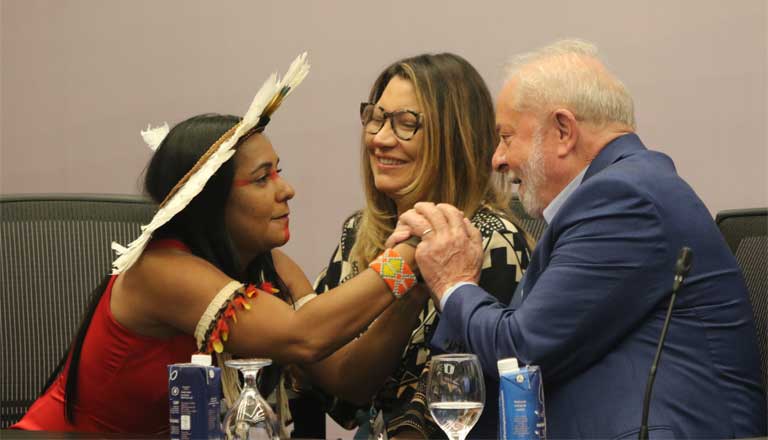
The urgent need to conserve the Amazon
But none of these high hopes can begin to be met until Lula takes office January 1st. Until then, the Brazilian Amazon, still administered by the Bolsonaro administration, is in the grips of an epic rush of land-clearing. A record 350 square miles of fire hotspots were seen in the Amazon in October, according to Brazil’s Space Research Institute, with almost all of the blazes certainly human-caused. Some 3,600 square miles have been burned this year so far, more than in the same period in previous years going back at least to 2015.
This continues a trend of escalating deforestation that began when Bolsonaro took office. The Amazon rainforest lost more than 13,000 square miles of tree cover in 2019-2021, according to the institute. With approximately 13% of the Amazon destroyed and 17% highly degraded, it is approaching a “tipping point” that could see the rainforest transition to dry savannah, WWF said in a report last week.
An Amazon environmental catastrophe, if not prevented, could strike a death blow to the world’s climate goals. Intact ecosystems like rainforests not only absorb vast amounts of carbon, but also store it in a way that is more resistant to “reversals” like fires and tree disease that can emit it back to the atmosphere. Above and below ground, the Amazon biome holds 123 billion tons of carbon, more than three times annual human emissions. It also has absorbed about 1.7 billion metric tons of CO2 equivalent more than it emitted over the past 20 years. However, recent deforestation in Brazil, which holds three-fifths of the rainforest, has now turned that part of the biome from a net sink to a net source of carbon dioxide emitted to the atmosphere.
Greenhouse gas emissions from land use change and forest loss increased by 18.5% in Brazil in 2021, driving an overall 12.2% jump in national emissions, Climate Observatory, a network of civil society organizations, reported earlier this month.
To keep climate change within the 1.5° Celsius Paris Agreement goal, humanity would need to cut 23 billion tons of emissions between now and 2030, and up to a third of that could come from stopping the destruction of ecosystems.
“There is high difficulty to find a pathway to that level of cuts without the full contribution of nature,” said Gabriel Labbate, REDD+ team leader and regional coordinator for Latin America and the Caribbean region at the UN Environment Programme.
Lula appears to understand the gravity of the problem, noting on Wednesday that “there is no climate security for the world without a protected Amazon.” But he faces great challenges, including a congress dominated by conservative political parties and controversial figures, such as Bolsonaro’s former environment minister Ricardo Salles, who was forced to resign last year amid an investigation he obstructed a police probe into illegal logging.
For that reason, policy experts have focused on what Lula can do through executive action; Brazilian presidents can exert a great deal of authority via presidential decrees. The Climate Observatory and other NGOs said they handed Lula a report this summer outlining steps for the first 100 days of his administration. The deforestation section of that document recommended re-establishing previous action plans for preventing deforestation in the Amazon and Cerrado biomes (known by their Portuguese acronyms PPCDAm and PPCerrado), and increasing the federal budget for monitoring and control by agencies including Ibama, the environment ministry’s enforcement arm.
The report also recommended terminating Brazil’s “environment conciliation” mechanism for reviewing fines for violations, which critics say has slowed the process, leading to punishment being meted out to deforesters late or not at all.
The increasingly lawless situation with deforestation has led to a violent environment in which deforesters are often better armed and more numerous than police or environment ministry agents. In June, Brazilian indigenous affairs official Bruno Pereira and journalist Dom Phillips were murdered while investigating criminal activities by outsiders in an Indigenous reserve in the Amazon.
“Indigenous people are being killed in Brazil because they’re protecting the Amazon, [stopping that] is the first action the gov needs to take,” said Marcio Alvini of the Climate Observatory. “The second is to restore the capacity to face environmental crime in Brazil, which was weakened under Bolsonaro; it’s real sabotage.”

Who will pay to protect the rainforest?
Much of the money for that enforcement can come from the Amazon Fund, a financing mechanism through which Norway and Germany paid Brazil for its proven reductions in deforestation. The fund, including $500 million, has been frozen since 2019 over Bolsonaro’s lack of environmental commitment. On Thursday, Lula met at COP27 with ministers from Norway and Germany, which have signaled they’re ready to unfreeze the fund.
But the Amazon Fund is not enough — the world will need to increase financing for ecosystem services like those that Brazil provides to the planet by keeping its trees standing, experts said. Announcing a Forest and Climate Leaders Partnership last week, the UK said 22% of the $12 billion pledged under the Glasgow forests pact had been distributed. Only Germany and Colombia, however, made additional funding pledges, for $1.97 billion by 2025 and $200 million per year for 20 years, respectively. Negotiations are still ongoing among countries to replenish the Green Climate Fund, which has paid for deforestation reductions under the UN’s REDD+ criteria.
More funding would help boost the price of carbon credits for proven reductions in deforestation, making it more profitable for tropical nations to conserve forests than it is to lease them as logging, mining or drilling concessions. The average price of forest carbon credits in 2021 was $4.7 to $15 per ton of CO2, much less than the $30 to $50 the UN Environmental Programme said is needed for conservation to be competitive with forest concessions.
Several companies have pledged new funding: Last week, the LEAF Coalition of private donors against deforestation announced it had increased its money pot from $1 billion to $1.5 billion.
“That’s a sign, but compared to the need and amount of forest that exists all over the world, and the need for climate financing, it’s not enough,” said Juliana Santiago of Emergent, which administers the LEAF Coalition. “We need to mobilize more thru REDD+, the Amazon Fund and the LEAF Coalition. Brazil will come back to the negotiating table to ask where are these commitments and when will the money be channeled.”
At the same time, activists worry that the growing sale of forest credits on voluntary carbon markets will allow companies to greenwash their activities without cutting emissions while undermining Indigenous struggles for land rights.
“We are, for example, concerned moving forward with [carbon] offsetting and these so-called market solutions to conservation of the forest, which could also be a trap,” said Carolina Pasquali, executive director of Greenpeace Brazil.
While Lula hasn’t taken a public position on “offsetting,” some of his allies are believed to favor such approaches.
For now, the president-elect’s mere presence has injected a shot of life into a COP where protests have to be pre-approved, with the summit attended by 600 fossil fuel lobbyists, more than any country delegation except next year’s host, United Arab Emirates. A draft cover text on Thursday morning looked “weaker than Glasgow,” according to Pasquali.
“If we can summarize Brazil’s climate contribution in one word,” Lula said on Wednesday, “the word is hope, hope combined with immediate and decisive action.”
Mongabay contributor Alec Luhn is on assignment at COP27 in Egypt.
Banner image: Lula poses with Amazon experts and Indigenous and black activists after their meeting on Thursday. Puyr dos Santos Tembé is at the front, in red. Image by Hamed Kamel/Brazil Hub.
FEEDBACK: Use this form to send a message to the author of this post. If you want to post a public comment, you can do that at the bottom of the page.







